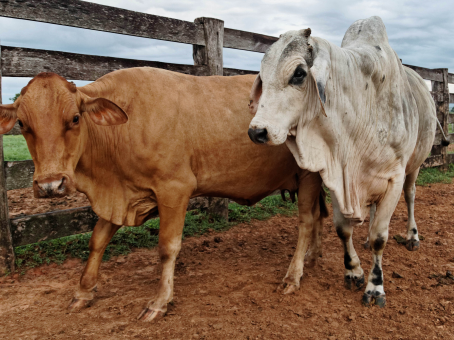In Cattle
They must be on a proper plane of nutrition body score 6 for beef cows and dairy body con dition score 3 to 4. Ticks or tabanid flies as well as through the use of blood-contaminated instruments.
Biotechnology In Cattle Artificial Insemination Artificial Insemination Cattle Veterinary Science
NADIS National Animal Disease Information Service is a network of 40 veterinary practices and 6 veterinary colleges monitoring diseases in cattle sheep and pigs in the UK including BPEX EBLEX HCC QMS Elanco Animal Health MLC and Merial.

In cattle. Artificial insemination is the technique in which semen with living sperms is collected from the male and introduced into female reproductive tract at proper time with the help of instruments. Ketosis is a common disease of adult cattle. Calves born from synchronized cows are similar in age and usually in size and weight making them a more uniform.
As an infectious contagious pathogen Salmonella is probably rivaled by only bovine viral diarrhea virus in its ability to cause clinical disease such as enteritis septicemia pneumonia and reproductive losses. Anaplasma marginale is the most common organism involved in cattle and it is transmitted through the bite of Dermacentor spp. Cows will calve within a few days of each other lessening the time you need to spend watching them.
Anaplasmosis is a blood cell parasite of cattle with a worldwide distribution but the disease is most common in tropical and subtropical areas. Bloat is not just a problem exclusive to cattle. Bovine animals on a farm or ranch.
Tighter calving intervals or having cows calve in a shorter window creates a more uniform calf group to market at weaning time. In addition to inappetence signs of nervous dysfunction including pica abnormal licking. Cows that are reproductively sound that exhibit calving ease and that have good milking and mothering ability are recipient prospects.
Mean urine pH ranges from 665 are optimal to manage DCAD and prevent milk fever. A group of animals that includes cows buffalo and bison that are often kept for their milk or. Rarely it occurs in cattle in late gestation at which time it resembles pregnancy toxemia of ewes see Pregnancy Toxemia in Ewes and Does.
The animals most often included under the term are the Western or European domesticated cattle as well as the Indian and African domesticated cattle. Livestock Wealth founded in 2015 is led by South African born entrepreneur Ntuthuko Shezi and backed by an experienced advisory board. Bloat in cattle is a serious problemand a very old onethat is often associated with consumption of high quality feeds that are easily digestible and rapidly fermented in the rumen.
Cattle domesticated bovine farm animals that are raised for their meat milk or hides or for draft purposes. Cattle definition is - domesticated quadrupeds held as property or raised for use. It typically occurs in dairy cows in early lactation and is most consistently characterized by partial anorexia and depression.
Urine should be measured 24 hr after addition of an anionic diet in pre-fresh cows. Livestock Wealth is a registered credit provider with the NCR and is also regulated as a registered agricultural producer agent with the APAC and SAMAC. Urine pH provides an inexpensive and relatively accurate estimate of blood pH in dairy cattle.
The increasing prevalence of. Making sure our cattle have plenty of clean water access to feed or forage and monitoring herd health are important aspects of daily care. Pinkeye is a highly contagious infectious disease that not only affects cattle in Nebraska but worldwide.
Salmonella in Dairy Cattle. When examining cattle one important disease not to overlook is pinkeye.
Rabies In Cattle Causes Signs Transmission Prevention And Control In 2021 Cattle Carnivorous Animals Street Dogs
Foot And Mouth Disease In Cattle Most Important Information For You Hooved Animal Cattle Animal Disease




Post a Comment for "In Cattle"